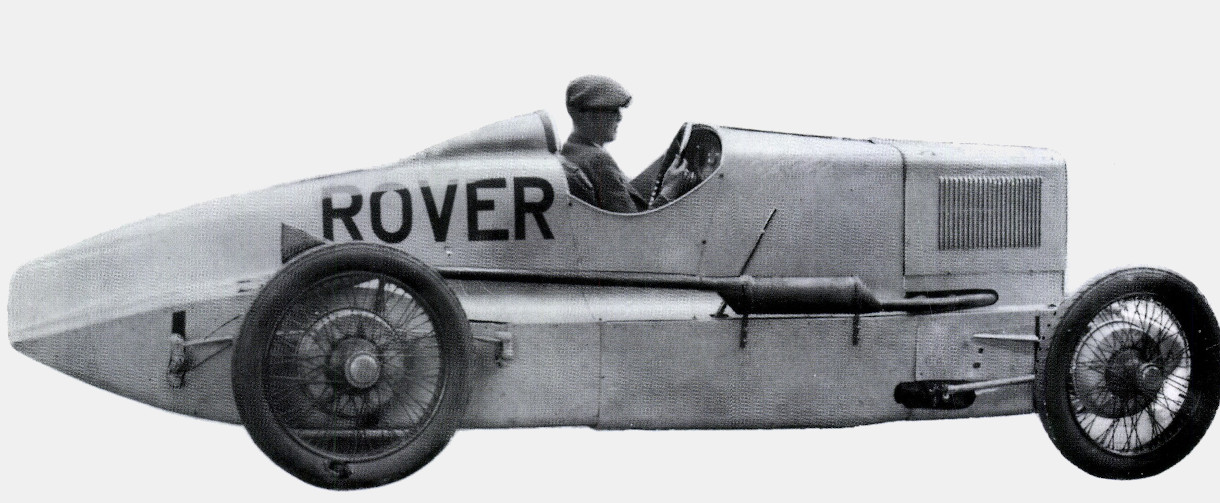
ROVER "Odin"
The 16/50 hp Racing Cars
1926 - 1927
The ROVER "Odin" - a tuned version of the ROVER 16/50hp - is intended to show that the model is not sluggish. - The picture is taken from the magazine "Motor Sport" from July 2000.
The opinion that the ROVER 14/45 hp and 16/50 hp were too slow compared to the competition, ROVER had to resolutely oppose. Above all, the ⇒ Dudley Noble, who is responsible for advertising and experienced in PR matters, attached great importance to refuting this. And the responsible constructor, ⇒ Peter August Poppe, who with his complicated engine construction already drove the factory director ⇒ Mark Wild to leave ROVER, put several racing cars on the wheels in a very short time, which should improve the reputation of the 16/50 hp.
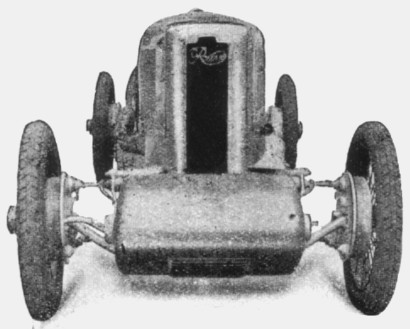 The ROVER radiator shape has been retained, as has the lettering The ROVER radiator shape has been retained, as has the lettering |
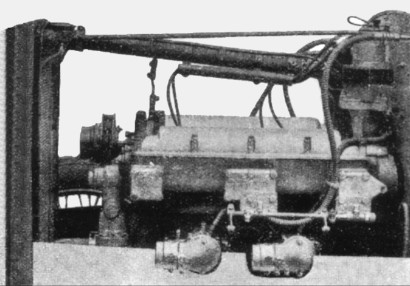 The engine was adapted with modified valves and higher compression. The two carburetors and the flexible fuel lines are recognizable The engine was adapted with modified valves and higher compression. The two carburetors and the flexible fuel lines are recognizable |
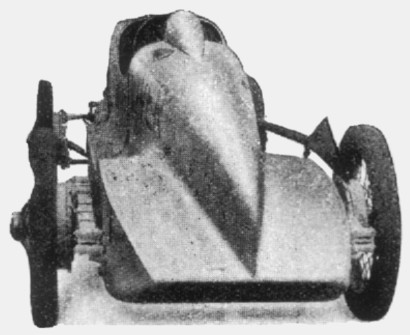 The rear of the ROVER 'Odin' - the adapted rear suspension is visible The rear of the ROVER 'Odin' - the adapted rear suspension is visible |
So far only the two body shapes shown are known. We would be grateful for any further pictures.
In July 2000, an article appeared in "Motor Sport" referring to the ROVER 16/50hp racing cars. The following excerpts are taken from it:
Which reminds me of how in 1925, wanting to move more effectively from small car production - the happy Eight and water-cooled Nine - than it could with the out-dated l4hp in this field, Rover fell for the 14/ 45 which had taken Peter August Poppe eight years to design after he had left the well-known White & Poppe firm of engine makers. The concept was exciting. The 2132 cc four cylinder engine had inclined overhead valves in machined hemi combustion chambers, with central sparking plugs, as in the best racers.
A camshaft in the side of the head, driven by worm gears from the back of the engine, operated the inlet valves with rockers and the exhaust valves via push-rods running horizontally through tunnels in the head to prod their rockers. Thus twin camshafts were obviated.
Oil was pumped through from a three-gallon sump to all conceivable parts of the engine, gudgeon pins included, and also to the single-plate clutch, its spigot bearing, and maintained the level in the gearbox and the steering box. Fine, on paper. But the power output was a mere 20 bhp per litre, the substantial chassis heavy, so that the Rover 14/45 would not do much more than 52 mph in saloon form, and that after a long struggle, and only 16 to 20mpg. Each car was sold to the agents at a loss and guarantee claims filled the Birmingham workshop. It was also expensive, at £565 for the 1926 Weymann saloon.
So a car difficult to sell. Rover did what it could. The low gear ratios at least made the 14/45 a good hill climher. So Rover undertook 150 (Note: In fact 50) RAC-observed ascents and descents virtually non~stop of the Welsh terror Bwlch-y-Groes, for which single performance Rover won the Dewar Trophy, for best show of the year. Sports two- and four-seater sports models were listed, the former at £650, one of which was timed to lap Brooklands at 83.94mph and do the flying-start mile at 85.49mph. And for the first since 1907 one if not two racing Rovers were built.
In a presumably desperate attempt to make the 14/45 more saleable, the bore had been increased from 75 mm to 80 mm (2426 cc with a 120mm stroke) and this 16/50 sold better, although on factory test it was passed if it did a mere 54mph. The sports two-seater cost £750 by 1927.
A less expensive model was needed, and the 2-litre six-cylinder car was Rover’s answer, priced at £368, against £770 for the 16/50 saloon; the Rover engine shop, under Mr P Samerton, worked night and day to get the first 30 2-litres to the agents.
Before this, an attempt was made to publicise the 16/50 with a racing version. The larger engine was put into a lightened 14/45 chassis and with 1/8 in larger valves, a 7:1 c r (compression rate) and two Stromberg carburettors fed by twin Autovacs, it gave some 92 bhp. Differential and reverse gear were omitted, as was the dynamo, but with the starting handle under the dumb-iron cowling the battery-fed starter was retained. Also, the axle ratio was raised. With a narrow, if rather high, single-seater body the dry weight of the car was 21cwt.
At the Track in 1926 Earling Poppe was third in ‘Odin’, the yellow Rover, then collected three second places, with a best lap at 102.9mph, and another third in 1927. A far cry from the 55/60 mph saloons.
In the article "The roads of the 1920th" Motor Sport published the following picture of the 16/50 hp "Odin" in issue 10/1986:
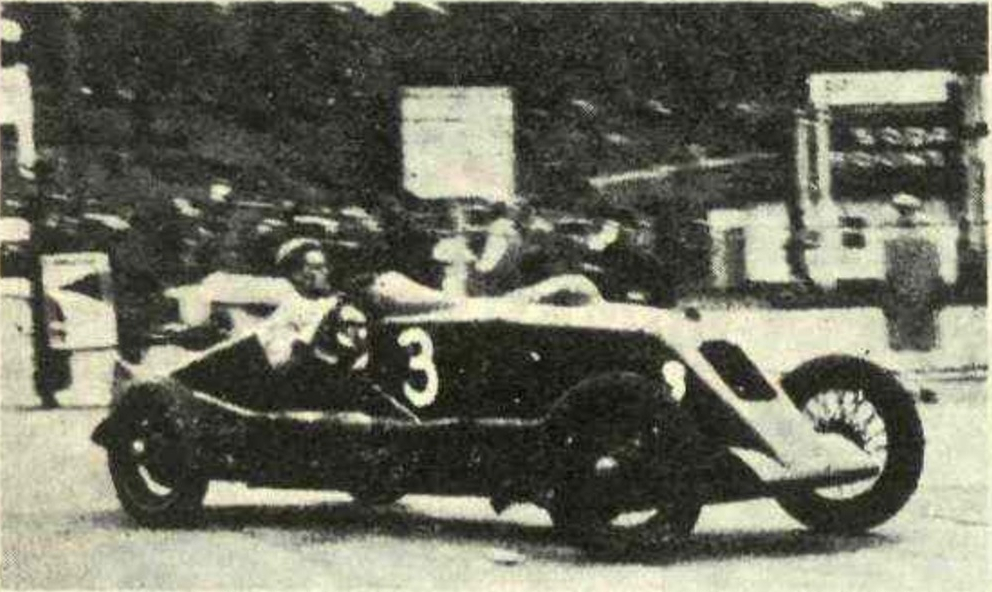 ". . . never mind what the orange single-seater Rover "Odin" did on Brooklands Track!"
". . . never mind what the orange single-seater Rover "Odin" did on Brooklands Track!"
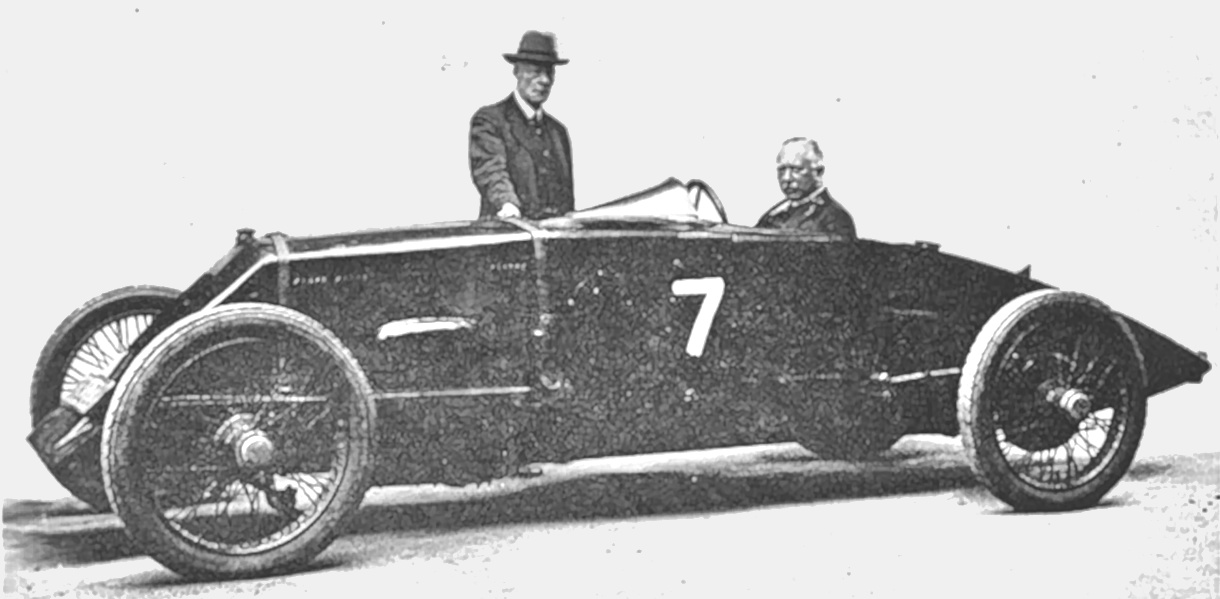 The ROVER "Odin" - standing next to the car is J. K. Starley, driving Erling Poppe, eldest son of the designer Peter August Poppe.
The ROVER "Odin" - standing next to the car is J. K. Starley, driving Erling Poppe, eldest son of the designer Peter August Poppe.
© 2021-2025 by ROVER - Passion / Michael-Peter Börsig

 Deutsch
Deutsch